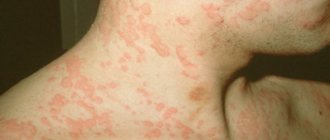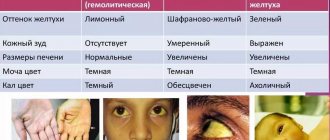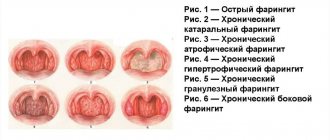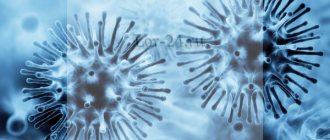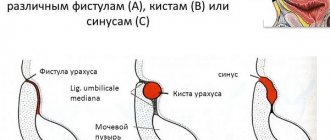Cystic fibrosis is the most common genetic disease. According to statistics, every 30th European resident is a carrier of the cystic fibrosis gene. In Russia there are more than 1.5 thousand children suffering from this disease. At the same time, for every patient diagnosed, there are 10 patients who are not properly examined.
The disease manifests itself in the first years of life, and before the advent of high-tech diagnostic and treatment tools, children with cystic fibrosis rarely lived beyond 8-9 years. Today's level of medical development allows such patients to reach adulthood and lead a normal life, no different from their peers. American doctors are already monitoring elderly patients, some of whom are over 60 years old.
The name “cystic fibrosis” comes from the Latin words mucos (mucus) and viscidus (viscous): this disease affects the glands that produce secretions - mucus, saliva, digestive juices, sweat, bile. Therefore, the organs that have mucous membranes are affected first: the lungs, bronchi, stomach, intestines, pancreas, liver. When the functioning of the glands is disrupted, the mucus becomes thick, a viscous secretion accumulates, and a chronic inflammatory process gradually forms in the organs. Such inflammation can occur in any of the listed vital organs or in several at the same time.
Why does cystic fibrosis occur?
Despite the fact that the first symptoms of cystic fibrosis in children may appear only at 6-7 months, this pathology is considered congenital. The reason for its development is a change in one of the chromosomes, which is responsible for the creation of an important regulatory protein. Without it, the composition of all fluids secreted by the glands (pancreas, sweat, liver, etc.) is disrupted.
This genetic defect is quite rare - in one child out of 3 thousand. However, once a mutation has occurred, it cannot be corrected. That is why cystic fibrosis is considered an incurable disease, but not fatal. With the help of properly prescribed therapy, it is possible to maintain the quality of life of patients at a decent level for a long time (several decades).
Main reasons
Cystic fibrosis (cystic fibrosis) is a genetically determined disease that is inherited. If a child is born to a couple where both parents have damaged chromosomal information, the chance of getting the disease is 25%. This type of transmission of genetic abnormalities is called recessive. Cystic fibrosis cannot be contracted. Neither the course of pregnancy, nor the state of health of the mother and father, nor living conditions have an effect.
In the early 90s of the last century, scientists made a real breakthrough in diagnosing the disease.
It was found that the mutating gene is located on the seventh chromosome.
Due to the changes occurring, the synthesis of its protein substance is disrupted. As a result, the viscosity of the secretion increases. In addition, its chemical and physical properties change significantly.
How does cystic fibrosis develop?
Each person has organs whose purpose is to produce special fluids (secrets) for the normal functioning of all systems: respiratory, digestive, excretory and others. They are designated by one term - “exocrine glands”. Why "external"? Because biologically active substances do not enter the blood, but are ultimately released into the environment. It is these organs that are primarily affected by cystic fibrosis.
All symptoms of the disease arise for one reason - a change in the composition of the fluids secreted by the glands. They become much thicker than they should normally be. Because of this, the secretion stagnates in the ducts, damages the organ and does not fulfill its function.
| The organ in which the secretion “stagnates” occurs | The composition of the secretion is normal | Consequences for the body |
| Pancreas | This is the most important organ, the secretion of which contains all the necessary enzymes for the digestion of proteins, carbohydrates (sugars) and fats. | Without enzymes secreted by the pancreas, it is impossible to digest food. Therefore, any incoming nutrients will “transit” through the intestines and practically not be absorbed into the blood. |
| Liver | Bile production is the main exocrine function of the liver. | Lesions of this gland are quite rare (in 5-7% of patients). Manifested by liver fibrosis and signs of portal hypertension. |
| Glands of the respiratory tract | Almost the entire surface of the respiratory tract is covered with special mucus, which allows the removal of microscopic foreign bodies (dust, liquid droplets, allergens, etc.) and contains antibodies against harmful microorganisms. | “Thickening” of the secretion leads to blockage of small bronchi, sedimentation of bacteria and viruses, and disruption of ventilation of certain areas of the lungs. |
| The male sex glands are the testicles. The disease does not affect the female reproductive system. | Normally, the testicles produce sperm, which are released through a system of tubules during ejaculation. | Cystic fibrosis usually causes blockage of the male genital tract, which leads to infertility. |
| Sweat glands | Along with sweat, some of the “extra” microelements and liquid are released. | With cystic fibrosis, sweat produces large amounts of chlorine and sodium, which makes it very salty and sticky. In addition, excessive loss of microelements can lead to disruption of the entire body (in particular, the heart and muscles). |
Taking into account the mechanism of development of the disease, we can say exactly what symptoms it will manifest. This point is very important for timely diagnosis and successful treatment of pathology.
Cystic fibrosis of the lungs - what is it?
The term cystic fibrosis is often used to refer to fibrocystic disease. This disease is hereditary in nature. The pathology is caused by a violation of the gene, which is responsible for the transport of chloride ions through the cell membrane. As a result of such changes, dysfunction of the glands that produce mucus and sweat is observed.
Cystic fibrosis of the lungs is the most common inherited disease. According to statistical observations, almost every 20th inhabitant of the planet is a carrier of a defective gene. The probability of developing the disease in a child whose parents are carriers of a gene with pathology reaches 25%.
Cystic fibrosis of the lungs - causes
Numerous genetic diseases include cystic fibrosis, the causes of which are determined by changes in the gene. With the development of pathology, there is a malfunction in the structure of the gene, which is called the cystic fibrosis transmembrane regulator (CFTR). It plays an important role in regulating the processes of entry and exit of water and salt from the body cells that line the respiratory tract and intestines.
Dysfunction of the gene causes the body to begin to synthesize thick mucus in the respiratory system. This prevents the active removal of pathogenic particles and microorganisms. It is worth noting that an important factor in the development of the disease is environmental causes and external influences. Inhalation of polluted air, tobacco smoke, and allergens together causes the long-term development of this pathology.
Can you get cystic fibrosis?
Cystic fibrosis disease does not pose a danger to others. However, the pathology is often accompanied by infectious and inflammatory processes in the lungs. In such cases, pathogenic microorganisms present in the lungs can be transmitted through airborne droplets. Cystic pulmonary fibrosis itself is not transmitted from a patient to healthy people.
Symptoms of cystic fibrosis
To a greater or lesser extent, the disease affects almost all exocrine glands. Therefore, its symptoms can be very diverse - from diarrhea to asthma attacks. It is this range of symptoms that should alert parents and doctors. The first signs of cystic fibrosis usually appear in the first year of a baby’s life. In rare cases (up to 10%) - in the first days after birth.
Neonatal cystic fibrosis
As you know, the first bowel movements of a child are different from all subsequent ones. A baby's poop is mostly made up of partially digested amniotic fluid that was swallowed in the womb. Pediatricians and neonatologists call it “meconium.” Unlike regular stool, it has no odor (since it contains virtually no bacteria), is more viscous (the consistency is similar to resin), and has a characteristic brown-yellow color.
Cystic fibrosis in newborns can manifest itself as intestinal obstruction due to blockage with original feces. Due to the fact that the secretion of the digestive glands is much thicker than it should be normally, the normal passage of meconium is disrupted. It stagnates at a certain level and does not allow digested milk and gases to pass through.
Why is this dangerous? Above the level of fecal stagnation, the intestines begin to stretch and become damaged, which can allow toxins to enter the baby's bloodstream. If the obstruction is not identified in a timely manner, the wall of the organ may rupture and cause the development of peritonitis (inflammation of the peritoneum). The level of harmful substances in the blood, in this case, reaches a critical value and often leads to the death of a small patient.
How does meconium ileus manifest? A child cannot say that he has a stomach ache, so the pathology can be diagnosed only by external data and his behavior:
- The newborn does not have stool or pass gas for a long time;
- Characteristic is hysterical crying, which intensifies when palpating the tummy. The child tries to lie still, as movements cause him pain;
- If you examine the abdominal area, you can note the presence of bloating, sometimes you can see a thickening of the wall and even the outline of the intestine;
- When palpating, it is quite easy to determine the area where the obstruction is located - with your fingers you can feel the dense, swollen intestinal wall. Below the level of stagnation, the diameter and density of the organ become normal.
Even at the slightest suspicion of this pathology, you should urgently call a doctor (preferably a neonatologist or pediatrician). He will be able to objectively assess the child’s condition and confirm/refute the presence of intestinal obstruction.
Cystic fibrosis in young children
Most often, children with cystic fibrosis are diagnosed at 5-7 months of life. Pathology can manifest itself in different ways, but two signs are most typical for young patients - decreased weight gain and damage to the respiratory tract.
In the first six months after birth, the child must gain at least 500 g in weight every month. By 6 months, the baby should weigh about 8 kg, and by 12 months - at least 9.5 kg. Developmental delay can be caused by various reasons: an unbalanced diet, previous intestinal infections, the presence of endocrine diseases, etc.
Cystic fibrosis should be suspected as a factor in reducing the child's weight in combination with respiratory disorders and constant stool disorders. Feces may be liquid, or its consistency may change - it becomes “greasy”, smears heavily and is difficult to wash off from diapers. Its color remains unchanged or becomes yellow. In some cases, it takes on a shiny appearance.
Typical respiratory symptoms of cystic fibrosis in infants include:
- A persistent dry cough, which subsides somewhat after treatment, but reoccurs a few weeks after “recovery.” More often, attacks intensify at night, due to the infant’s lying static position;
- Episodes of suffocation - the child coughs and suffocates due to blockage of part of the respiratory tract with a mucus plug. If he coughs, a small amount of thick, sticky mucus comes out. The liquid may be clear or dirty green (if it is infected with bacteria);
- Frequent repeated respiratory tract infections (rhinitis, pharyngitis, bronchitis, etc.). It is not uncommon for cystic fibrosis to be hidden under the guise of “chronic bronchitis,” which is difficult to treat and occurs with frequent exacerbations.
Let us note once again that this disease is very characterized by a combination of symptoms from the digestive and respiratory tracts. Over time and without adequate therapy, they will only develop, taking a chronic relapsing course.
Symptoms of damage to various systems
As the child grows up, this pathology will develop with him. If the correct therapy has been prescribed since childhood, the disease can be partially controlled and most relapses can be prevented. However, regardless of treatment, the symptoms of cystic fibrosis in adults may be supplemented by new signs of system damage:
| Affected system | Characteristic signs |
| Digestive |
Much less often:
|
| Respiratory |
|
| Sexual | Male infertility - despite the fact that sperm production in such patients is not impaired, due to blockage of the ducts, normal ejaculation is impossible. Conception can be achieved with the power of IVF technology by taking a puncture of seminal fluid from a man. |
Modern medicine can cope with most of these symptoms with the help of drugs, but some changes in the internal organs become irreversible. Therefore, it is important to promptly identify the disease and prevent the development of severe forms of pathology.
Cardiopulmonary failure
Although this condition is not directly related to cystic fibrosis, it can occur with the disease. The reason lies in a serious obstruction of the respiratory tract. Over time, most of the small bronchi become closed with mucus and stop carrying oxygen. Due to the fact that the remaining respiratory tract cannot deliver the same volume of air for gas exchange, the heart has to “pump” blood to the lungs much more intensely.
For several years, these processes may not manifest themselves in any way, as the organs cope with increased load. Gradually, the right side of the heart begins to increase in size, as it can no longer perform the “work” assigned to it. Quite quickly, its compensatory capabilities expire, and the blood begins to stagnate in the organ cavity and pulmonary vessels. It is at this stage that cardiopulmonary failure (CPF) develops.
How does it manifest itself? It is quite easy to suspect it without special research. The following signs are characteristic of SLS:
- Dyspnea. At the very beginning of the process, the symptom can occur only after mental/physical stress (severe stress, climbing stairs, etc.). However, the process progresses and in severe cases, shortness of breath begins to appear spontaneously, without any provoking factors;
- Moist cough. It occurs due to stagnation of blood in the pulmonary vessels and sweating of its liquid part into the intercellular space;
- Pale skin. A typical manifestation of a lack of oxygen for tissues;
- "Drumsticks". This is a characteristic change in the fingers, manifested by thickening of the nail (end) phalanges. Characteristic of severe SHF, in which the functioning of not only the right, but also the left parts of the heart is disrupted;
- "Watch glasses". Changes in fingernails in the form of thickening, bulging and taking on a round shape. As a rule, it occurs together with the symptom of “drumsticks”.
The presence of this condition is an unfavorable prognostic sign, since pulmonary heart failure significantly worsens the patient’s quality of life. It is impossible to get rid of it.
Signs of an incipient exacerbation of the bronchopulmonary process
It is advisable for parents to keep a diary of the child’s condition, which will reflect changes in the baby’s well-being. This information will help you and your doctor notice the slightest deviations from the norm. By keeping a diary, parents learn to feel their child and recognize the first signs of a beginning exacerbation.
Signs:
lethargy, decreased appetite, increased body temperature, increased cough (especially at night), changes in the color and amount of sputum, increased breathing. If these symptoms appear, parents should call their local doctor.
Diagnosis of cystic fibrosis
It is important to detect the relationship between the symptoms of cystic fibrosis as early as possible in order to make a correct diagnosis, and not to treat “false” bronchitis, dysbiosis, lactase deficiency and other pathologies that the child has never had. First of all, the doctor and parents should be alerted to the range of symptoms that occurs in a young patient almost simultaneously.
In addition to the characteristic clinical picture, it is important to use special laboratory techniques. Classic blood and urine tests will not give a clear picture. The diagnosis can be confirmed using a simple but unusual method - examining the patient's sweat. In case of cystic fibrosis, the content of electrolytes (chlorine and sodium) should exceed the norm by 3-5 times.
If the doctor doubts the results of the study or the symptoms do not allow a clear conclusion, the child undergoes a genetic examination. If a defect in the regulatory protein gene is found, there is no doubt about the presence of the disease.
As additional methods to assess the condition of the body and its individual systems, you can use:
| Research method | Changes in cystic fibrosis |
| Biochemical blood test |
Signs of liver damage:
Signs of damage to the pancreas:
|
| Clinical stool analysis |
|
| Sputum analysis |
|
| Some instrumental methods (X-ray/CT of the lungs, ultrasound, bronchoscopy, etc.) |
|
As a rule, the listed studies are sufficient to make a final diagnosis and determine the amount of treatment required.
Operation
Cystic fibrosis is an indication for lung transplantation when destruction of the pulmonary system significantly reduces the likelihood of survival (less than 50%) over the next two years. It should be noted that this treatment method has its limitations - the percentage of patients surviving up to 15 years after lung transplantation is 33%. Currently, about 600 lung transplants are performed annually on people suffering from cystic fibrosis.
Lung transplantation for cystic fibrosis
It should be emphasized that there is no effective treatment for cystic fibrosis. The treatments and medications listed above can only prolong survival and quality of life. Carrying out genetic tests for cystic fibrosis is an element of disease prevention when planning pregnancy, as well as when taking early therapeutic measures to prolong the life of patients with cystic fibrosis.
Also, early detection of the disease (10-12 weeks) during pregnancy makes it possible to terminate the pregnancy. Many couples, knowing about the incurability of the disease and its severe symptoms, choose abortion.
MAKE AN APPOINTMENT
Abortion and contraception clinic in St. Petersburg - department of the medical gynecological association "Diana"
Make an appointment, tests or ultrasound via the contact form or by calling +8 (812) 62-962-77. We work seven days a week from 09:00 to 21:00.
We are located in the Krasnogvardeisky district, next to the Novocherkasskaya, Ploshchad Alexander Nevsky and Ladozhskaya metro stations.
The cost of a medical abortion in our clinic is 3,300 rubles. The price includes all pills, an examination by a gynecologist and an ultrasound to determine the timing of pregnancy.
Share link:
Modern treatment of cystic fibrosis
Since it is impossible to restore the damaged chromosome and completely get rid of this pathology, treatment should be aimed at restoring the functions of individual organs. In cystic fibrosis, the main burden, as a rule, falls on the digestive and respiratory systems, so correcting their work is the primary goal of therapy.
Therapeutic nutrition for infants
It is very important to organize nutrition for an infant with cystic fibrosis. This will help prevent developmental delays in the child that occur due to lack of nutrients, and strengthen his body from harmful external influences. Let us note the most important points:
- If the child's mother does not suffer from infectious diseases, including chronic ones (HIV, hepatitis, etc.), breastfeeding is always better than synthetic formula. It is optimally absorbed in the child’s intestines, as it is created only for him. It also contains substances (antibodies) that protect the baby’s body from pathological microorganisms;
- If it is not possible to feed the baby with mother’s milk, you should use special “adapted” formulas that are easier to digest in conditions of impaired digestion. These include: Humana LP + MCT, Alfare, Nutrilon Pepti TSC, Pregestimil and others. Your attending pediatrician will help you choose the best option;
- If a child has a confirmed lack of pancreatic enzymes, it is necessary to compensate for their deficiency, starting from an early age. For this purpose, there are modern preparations in the form of microgranules, which are enclosed in one capsule: Creon, Ermital or Panzinorm. The dose should be selected individually. As a rule, 1/3 or 1/2 of one capsule is enough for children under one year of age;
- Feeding should be done at the baby's request. The signal for this is “hungry” crying. Most often, it looks like this - the baby screams invitingly for a certain time, after which it calms down for a few minutes, waiting for the result. If he is not fed, he continues to cry.
Each of these points is explained to the parents of a young patient by neonatologists/pediatricians immediately after the disease is diagnosed. It is important to approach feeding responsibly, as this will have a great impact on the future quality of life of the child.
Medical nutrition for adolescents and adults
For older patients, proper nutrition does not lose its relevance, but the requirements for it are much easier to fulfill. There are only three of them:
- The diet should be dominated by high-calorie foods - the daily intake in patients with cystic fibrosis should be 1.5-2 times higher than in healthy people. Calories should be distributed evenly throughout the day over 4-5 meals;
- If the patient has proven insufficiency of digestive enzymes, adequate doses of replacement medications must be selected. The drugs used are the same as for infants;
- The patient's body must receive vitamins A, D, E, and K. As a rule, regular multivitamin complexes are prescribed for this purpose.
Such simple nutritional correction will significantly improve the quality of life with this disease, maintaining physical development at the proper level and maintaining immune function.
Treatment of respiratory disorders
Medication methods
The second, most common group of symptoms, along with digestive disorders, are signs of damage to the respiratory tract. The biggest role in this pathological process is the blockage of small bronchi with mucus, which makes normal breathing impossible. Taking this point into account, you can decide on treatment tactics - you should constantly dilute the thickened secretion of the glands and expand the airways (if necessary).
This can be done using two groups of drugs:
- “Thinning” medications (Ambroxol, Acetylcysteine, Carcysteine and their analogues) - thanks to this therapy, in patients with cystic fibrosis it is possible to reduce the density of the mucous fluid in the bronchi, so that they can expectorate it and independently restore the patency of the respiratory tract. For this purpose, you can also use a regular solution of Sodium Chloride (recommended 7%) for inhalation;
- Therapy that dilates the bronchi (Salbutamol, Berodual, Formoterol, Fenoterol) - the need for these drugs is determined individually. Most often, they are not used for continuous use, but only during attacks of suffocation/shortness of breath.
As a rule, inhalation is considered the optimal method of drug delivery for patients with cystic fibrosis. It allows you to achieve better effect from a smaller dose of medication. Therefore, patients (or their parents) are recommended to purchase a nebulizer - this is a small device with which you can carry out therapy at home.
The best drug for normalizing breathing . In addition to nonspecific drugs (Ambroxol, Acetylcysteine, etc.), which are used for any bronchitis, pneumonia and other respiratory diseases, a special medicine has been developed for cystic fibrosis - DNase (synonyms Silex, Pulmozyme). It is aimed at destroying mucus in the lumen of the bronchi and improving its discharge. Comparing the effect of Ambroxol and Pulmozyme, it was proven that the second drug is much more effective in this pathology. The disadvantage of DNase is its price - on average, 7,500 rubles. for 2.5 ml of solution.
Kinesiotherapy
In addition to the use of medications to restore breathing, a certain effect can be achieved from a non-drug technique called “Kinesiotherapy”. Literally, this term means “motion therapy.” This is a set of measures that mechanically affect the chest and improve the movement of mucus in the respiratory tract.
What is kinesiotherapy? Currently, the following methods are distinguished:
- Percussion massage - with the patient sitting, rhythmic tapping blows are performed on the chest. As a rule, they start from the front surface and then move to the back. To perform it, it is not necessary to involve a specialist - after simple training from a doctor, even members of the patient’s family can perform it;
- Active breathing - normal deep breathing movements that cause the bronchi to periodically expand/contract, which improves the passage of fluid through them;
- Postural drainage is performed by the patient independently. To do this, you need to put your feet on an elevated surface and actively cough up sputum while lying down, turning from your stomach to your side. It has been proven that thanks to this simple manipulation, the effect of medications can be significantly improved;
- Devices for compression-vibration effects - at present, special equipment has been developed that applies vibration to the chest, breaking up solid mucous formations into separate parts. However, these devices are not common in the Russian Federation.
It is very important that treatment of cystic fibrosis in children and adults is carried out using all available techniques until the patient’s well-being improves. Since this is a serious incurable disease with constant exacerbations, you should not neglect the doctor’s recommendations, even if they seem insignificant (regarding diet, kinesiotherapy, etc.).
General recommendations
Daily physiotherapeutic procedures (postural drainage, etc.) are necessary for effective expectoration of secretions from the respiratory tract. Preventative vaccinations, including annual flu shots, are recommended.
Systematic general developmental physical exercises are recommended (depending on the body’s capabilities). Because of the digestive disorders and malnutrition that often accompany the disease, a high-energy diet and supplementation with pancreatic enzymes and fat-soluble vitamins are used.
Latest developments in the treatment of cystic fibrosis
Currently, the search for a gene treatment for the disease has almost reached a dead end. Therefore, scientists decided to influence not the very cause of the pathology, but the mechanism of development of cystic fibrosis. It was determined that the thickening of gland secretions occurs due to a lack of one trace element (chlorine). Accordingly, by increasing its content in these fluids, the course of the disease can be significantly improved.
For this purpose, the drug VX-770 was developed, which partially restores the normal chlorine ratio. During clinical trials, doctors were able to reduce the frequency of exacerbations by almost 61%, improve respiratory function by 24% and achieve weight gain by 15-18%. This is a significant success and suggests that in the foreseeable future, cystic fibrosis can be successfully treated, rather than just eliminating its symptoms. At the moment, the VX-770 is undergoing additional tests; it will not appear on sale until 2018-2020.
Cystic pulmonary fibrosis - life expectancy
Cystic fibrosis disease affects not only the quality of life, but also its duration. Improvements in the level of medicine and the discovery of effective treatment methods have changed the status of cystic fibrosis from a childhood disease to a disease of adults.
Today, up to 42% of cases of the disease are recorded in patients over 18 years of age, while 5% of this number are people over 40 years of age. With improvements in the quality of diagnosis and care, the average life expectancy of such patients continues to increase. In some countries, there are patients with fibrocystic lung disease over 50 years of age.
Manifestation of the disease in newborns
The first bowel movements of newborns differ significantly from subsequent ones. Original feces or meconium are odorless, more viscous and have a brownish-yellowish tint. In newborns, cystic fibrosis is manifested by intestinal obstruction due to blockage of meconium. The pathology is characterized by the following symptoms:
- absence of stool and passing gas in the child for several days;
- hysterical crying, intensifying when palpating the abdomen;
- compaction of the walls and contour of the intestine, which is noticeable visually.
Above the level of meconium stagnation, the intestines begin to stretch and become damaged. As a result, toxins penetrate into the blood. In the absence of timely medical care, the intestines can burst and cause peritonitis. The level of toxins in the blood quickly reaches critical levels, which often leads to death.



